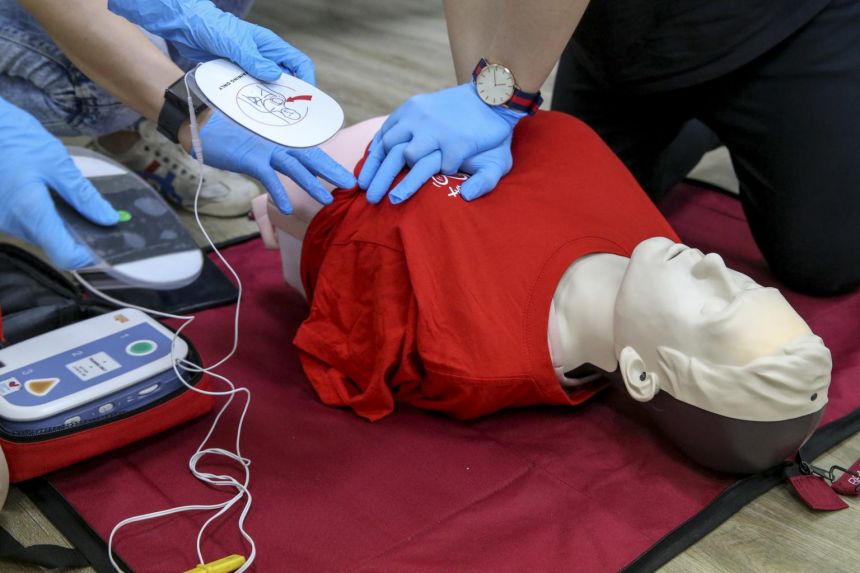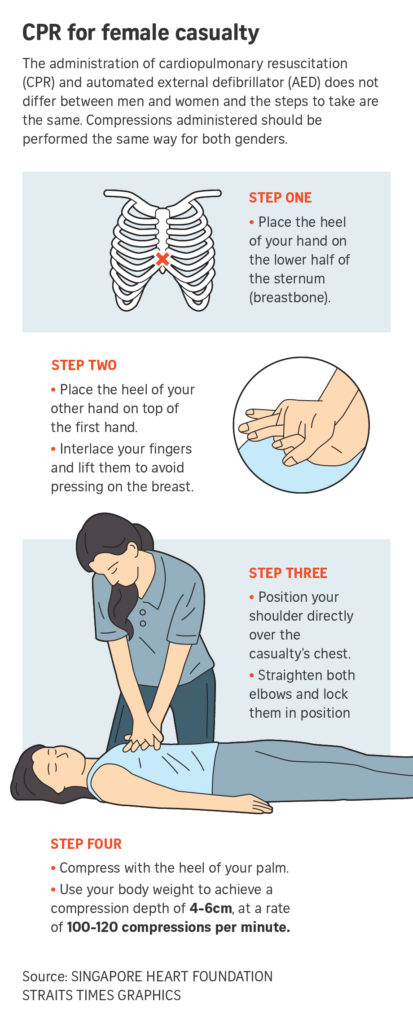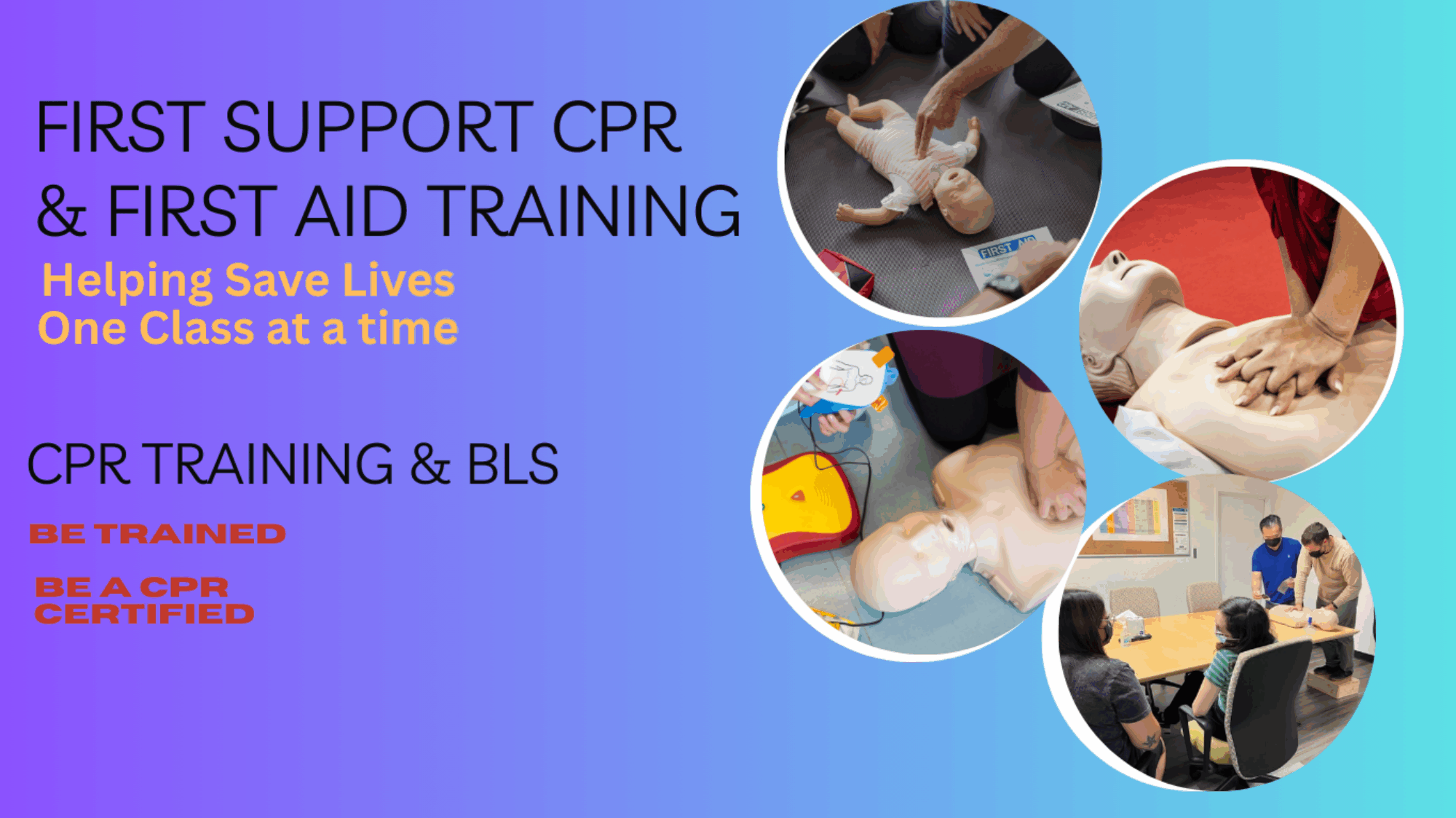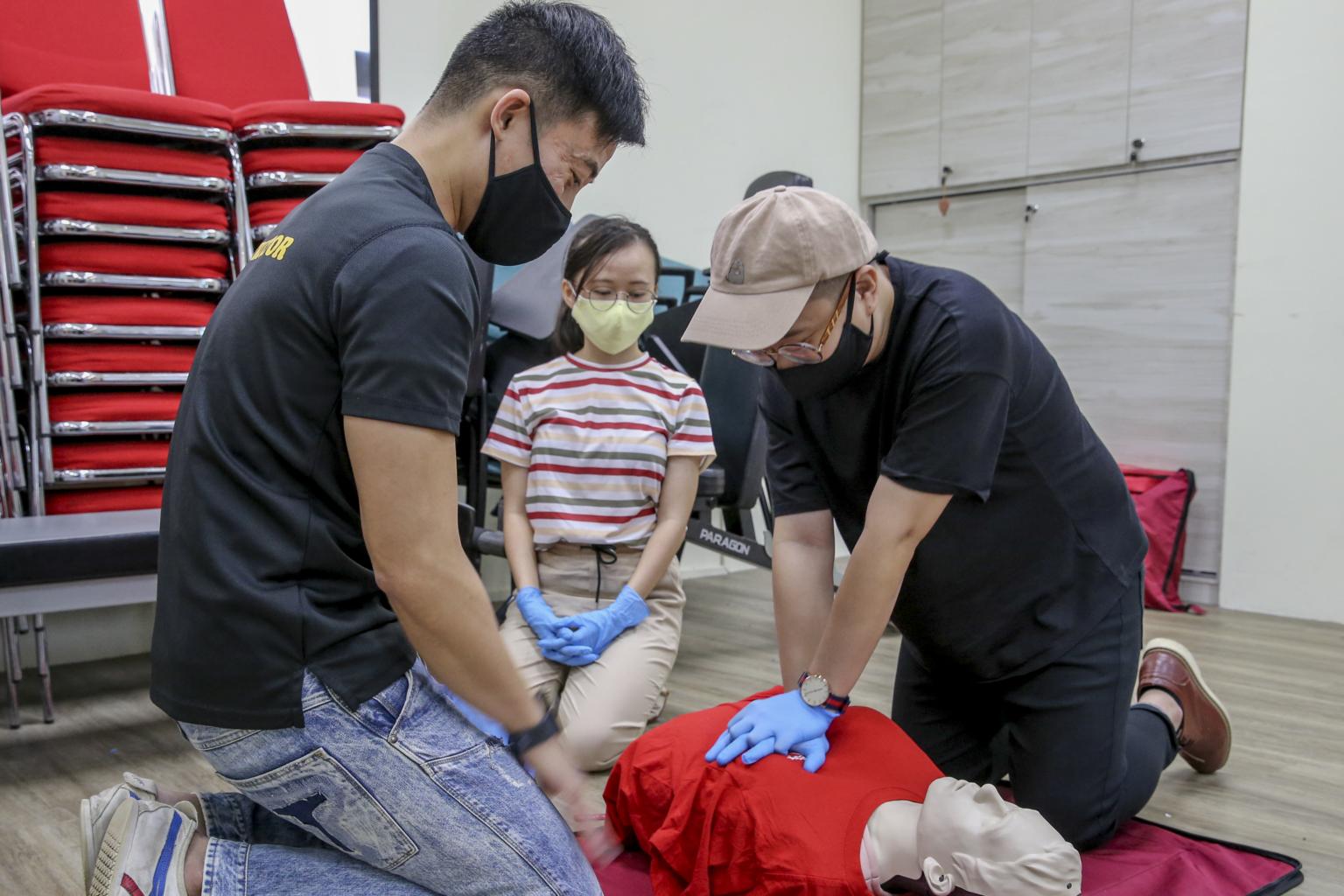A new female manikin CPR vest has been developed to help people being trained in cardiopulmonary resuscitation (CPR) better help female victims whose hearts have stopped and increase their chance of survival.
Traditionally, CPR training is taught with manikins of a male physique. Rescuers may not be as familiar with performing CPR on women, said the Singapore Heart Foundation (SHF), which developed the manikin vest.
Some also hesitate to perform chest compressions on women for fear of being accused of molest if they touch a female patient’s breasts. Likewise, worries about outrage of modesty may stop them from using an automated external defibrillator (AED) to revive a woman.
SHF board member Chee Tek Siong said such worries may lead rescuers to placing their hands too low on the chest, below a woman’s bustline, which may cause injuries when performing chest compressions during CPR.
But the female manikin vest can help familiarise first aiders with where to correctly place their hands on a woman’s chest – on the lower half of the sternum, just like for men. Trainees can also learn how to paste AED pads without unnecessarily exposing a woman’s chest.
Without intervention, a person’s chance of survival drops by 10 per cent for every minute that passes after cardiac arrest.
“In such a life and death moment, no amount of embarrassment is worth refraining from saving a life,” said Ms Denise Ng, a CPR and AED chief instructor with SHF.
Said Dr Chee: “If you have manikin that looks like a female, you can practise on it and you’ll be more confident.”
The manikin vests will be distributed to 60 CPR and AED training centres from Sunday (Jan 17), which is National Life Saving Day.

Though CPR may cause injuries such as fractured ribs, the risk of complications in women and men is the same, said Professor Marcus Ong, the medical director of the Health Ministry’s Unit for Pre-Hospital Emergency Care (UPEC).
The number of out-of-hospital cardiac arrest (OHCA) cases in Singapore has been increasing and is about 3,000 every year, the UPEC said. This is due to the rapidly ageing population and an increase in chronic diseases in Singapore such as diabetes, hypertension and heart conditions that increase the risk of cardiac arrest.
But the number of bystander CPR also increased almost threefold, from 22 per cent in 2011 to 61.8 per cent in 2018. Prof Ong attributed this to the dispatcher-assisted CPR programme launched in 2012 – where someone who calls 995 when witnessing a person having cardiac arrest is guided by the dispatcher over the phone on performing chest compressions.
In light of Covid-19, Prof Ong also said that Singapore’s emergency services will instruct people to perform “hands-only CPR” and not mouth-to-mouth resuscitation.
As both parties are likely to be wearing masks, he added: “Most of us are quite well-protected and we don’t need to be worried about doing CPR, even in a Covid situation.”


